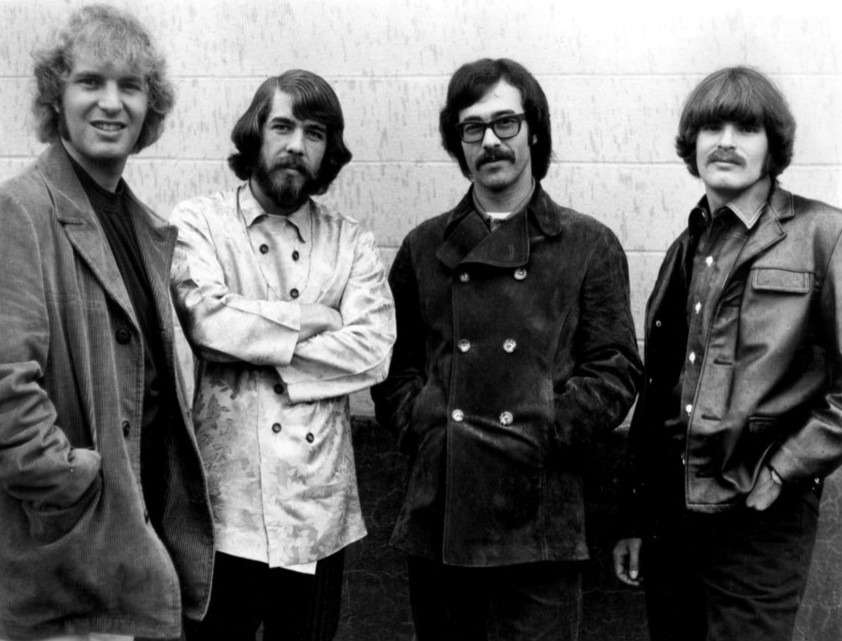A history of one of the greatest classic rock acts
You won’t be an oldies music fan if you don’t know anything about Creedence Clearwater Revival.
Creedence Clearwater Revival started in 1959 when two high school friends, John Fogerty and Doug Clifford, formed a band called The Blue Velvets. John’s older brother, Tom Fogerty, later joined the group.
They were first signed to Orchestra Records in California’s Bay Area, where they released three singles during the early 60s music era, which received only modest sales. The group signed a contract to do an album with another label called Fantasy Records. The label co-owner, Max Weiss, changed their name to the Golliwogs, to cash in on the British Invasion whose wave of bands had similar-sounding names. Two of its members, John Fogerty and Doug Clifford, were drafted into military service in 1966, which essentially iced any recording plans that the group had.
In 1967, Saul Zaentz bought Fantasy. He gave the band the chance to record an LP, only if they changed their name. Since the group strongly disliked the Golliwogs, they worked with Zaentz and tried several other names before selecting, Credence Clearwater Revival. Along with the name change came several moves within the group. Cook went from piano to bass, Tom moved from singer to rhythm guitarist, and John became the band’s leading vocalist and guitarist.
In 1968, John Fogerty and Clifford were discharged from the service. Later that same year Credence Clearwater Revival released their LP, that produced the band’s first charting single, “Suzie Q”. It went to the Top 20 at #11. “Suzie Q” was followed by another cover, “I Put A Spell On You”, which went to #58. Their debut album went platinum and sent them on their first national tour.
In January 1969, CCR released their second album, Bayou Country. It produced one of the band’s now-classic and most popular songs, “Proud Mary”. This song went to #2 on the Hot 100 (#8 on the UK charts) and was written by John Fogerty during his discharge from the Army. Bayou Country also went platinum.
In August of that same year, the band released their third LP, Green River, which yielded another #2 single “Bad Moon Rising”. Green River, meanwhile, topped the Billboard 200 album charts, selling three million copies in the US alone.
Two months later, Credence Clearwater Revival produced their fourth studio album, Willy and The Poor Boys, which also became a best-seller and went double platinum. The album’s singles, “Down On The Corner” and “Fortunate Son” both went to the Top 20 at #3 and #14 respectively. CCR became one of the only groups to achieved the rare feat of producing three best selling albums, and nine charting singles in just one year.
In July 1970, Credence Clearwater Revival released their finest album, Cosmo’s Factory, which quickly lifted sales and was certified gold in December. Cosmo’s Factory sold four million units, making the album a quadruple platinum. The album’s singles, “Travelin’ Band” (back with “Who’ll Stop The Rain”) and “Up Around The Bend” (backed with “Run Through The Jungle”) went to #2 and #4 on the Hot 100, respectively. The album (ranked at #265 by the music magazineRolling Stone in its “500 Greatest Albums Of All Time”) ultimately crowned CCR as one of the greatest rock and roll/Southern rock bands of all time.
Pendulum, the group’s sixth album, was released by the time Cosmo’s Factory was declared gold by the Recording Industry Association of America. Again, it was an astounding success. Its singles “Have You Ever Seen The Rain?” and “Sweet Hitch-Hiker” reached Top 10 Billboard at #8 and #6.
Despite CCR’s commercial success, tensions were brewing among band members, as the effects of heavy touring and recording took its toll. In addition, John Fogerty assumed CCR’s artistic control, which estranged him from the rest of the band. He cited that the band’s “democratic” approach would hurt their future commercial success, to which the rest of CCR disagreed. When John’s brother, Tom, left the band in February 1971, John changed his mind and allowed other members to write and sing their own material. They released their final album,Mardi Gras, using this new approach. The album did well, though not as strongly as its multi-platinum predecessors and many critics called it their “worst” album.
The acrimony and the irreparable estrangement between the Fogerty brothers were worsened by the group’s legal and financial troubles. Due to the deteriorating relations between the members and also Credence’s souring relationship with their label, Fantasy Records, CCR publicly announced their breakup on October 16, 1972. All four members worked on separate music projects after the breakup. Stu Cook and Doug Clifford teamed up, mostly doing session work. They also formed the Credence Clearwater Revisited in 1995. John Fogerty saw considerable success as a solo artist; one of his albums, Centerfield, was a Billboard chart-topper in 1985, yielding the Top 10 hit single which is the title track. In comparison to his brother’s solo career, Tom Fogerty, was less successful, releasing a handful of records before dying of AIDS (from a blood transfusion) in 1990.
Although Credence Clearwater Revival only stayed together for five years, their songs will always remain in the hearts and minds of rock and rollers. During the height of their success, the band sold over 26 million albums in the US alone and scored nine Top 10 hit singles, with four of them reaching #2. The creative and distinct southern rock sound of CCR has an eternal appeal that reaches across the generations and continues to influence the young musicians of today.
